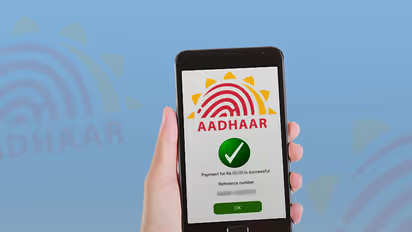How to use Aadhaar Pay wisely, avoid its problems

Synopsis
Aadhaar payments need your unique Aadhaar number and fingerprints. Merchants will have to invest in a biometric scanner.
In a bid to go cashless, the government launches another payments service. This time based on your Aadhaar cards. Yes, pay using your Aadhaar card number, which has over 111 crore registered users in the past six and half years.
How it works
Aadhaar payments need your unique Aadhaar number and fingerprints. That's it! You don't need to pull out your smartphone to key in numbers, flash a barcode, or so on. The app is essentially just for merchants and shopkeepers. Besides, merchants would have to invest an additional Rs 2000 for the biometrics, which is said to be a one-time cost.
So, Aadhaar Pay is an option that will also be available on the BHIM app. For payments, customers will have to key in their Aadhaar number into the app and the app will then show various bank accounts linked to the number.
The Aadhaar Pay has already been integrated by 14 banks. They can then choose a bank and place the finger on the fingerprint scanner, which will serve as a password for the transaction.
Once the fingerprint and Aadhaar data matches, NPCI will carry out the transaction by transferring money from one account to another using the Aadhaar bridge payment system. APB is a repository of Aadhaar number of residents and their primary bank account number used for receiving all social security and entitlement payments from various government agencies. Now, it should be noted that under the Aadhaar Payment Bridge (APB), 38.51 crore accounts have been linked to Aadhaar till 2017.
Benefits
It is a simple method as users don't necessarily have to own a device for mobile transfers. So, neither you need to carry a debit or credit card, nor a phone. Unlike the additional card charges that come with debit or credit cards, this method won't have any.
It puts away the hassle of MPINs and other passwords and OTPs. Merchants will have to buy a biometric scanner, but the one-time cost of Rs 2000 is cheaper than several other POS systems.
While customers will have a hassle-free experience, merchants will require investing in a fingerprint scanner, which is said to be a one-time Rs 2000 investment. Besides, merchants will need to install the Aadhaar app link to their bank account and an extremely reliable Internet connection for a smooth process.
However, considering many in the rural areas don't have a bank account, this method may not be useful for them. This payments system cannot be used for person-to-person transactions, and limits to payments at stores and so on. Needless to say, an unreliable Internet connection could be annoying and let's not forget the additional payment for a good connection.
Biometrics and security
Before we jump onto security, let's understand that there is also the possibility of biometric failures. In the past, there have been about 16 lakh Aadhaar authentication requests that have failed, as per a previous report. Now, these vulnerabilities would be passed on to the digital payments method too.
Moreover, biometrics that is touted to be the most secure way to safeguard your information may not be true. Afterall, nothing can guarantee 100 percent online security.
Your password has to be inherently private, but your fingerprints are out there for everyone to see. In a movie-like yet realistic scenario, imagine sipping wine at a bar while someone easily snaps off those fingerprints from the glass.
Experts have also begun warning about the newer modern-age problems that biometrics could bring. Research by a team at Japan's National Institute of Informatics (NII), has warned users that high-quality cameras can easily copy the fingerprints. NII researchers were able to do so from a photo that showed users posing with a casual peace sign.
Moreover, merchant will have to ensure utmost security. Now, this raises questions like - do we have laws for biometrics? In India, we hardly speak of laws for biometric security. Moreover, the legal status over if a person can store someone's biometric data without their knowledge is still unclear.
Find the latest Technology News covering Smartphone Updates, AI (Artificial Intelligence) breakthroughs, and innovations in space exploration. Stay updated on gadgets, apps, and digital trends with expert reviews, product comparisons, and tech insights. Download the Asianet News Official App from the Android Play Store and iPhone App Store for everything shaping the future of technology.